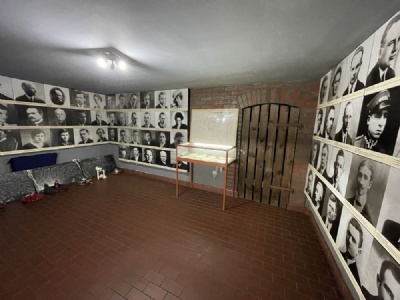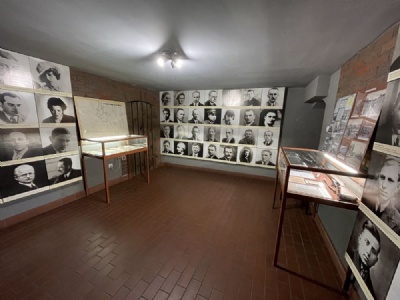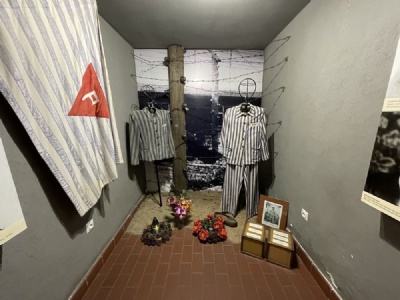Rypin Prison
About 100 kilometres east of Bydgoszcz lies a town called Rypin. About a week after Germany invaded Poland in September 1939, Rypin was occupied and the Germans took over a building belonging to the state police. Here, the Germans established a local seat for the Gestapo and Selbschutz (local paramilitary units composed of ethnic Germans). In the basement there was two prison cells suitable for the purpose of imprisoning and interrogating prisoners. The arrests did not wait and it was mainly landowners, priests, teachers, journalists and other educated polish citizens the Germans considered could pose a threat to them. The arrests and executions took place in what was called AB-Aktion (Ausserordentliche Befriedungsaktion). In addition to poles, Jews were also arrested.
Those arrested were put in one of the two prison cells from where they were retrieved and interrogated. Not infrequently, mistreatment and torture occurred during the interrogations to force confessions or information from the prisoners. People living in Rypin called the prison ”house of torture” (polska dom Kazni). Several prisoners died during interrogations while others were taken to special execution sites outside Rypin where they were shot and buried in mass graves, such places as Rusinowo, Rak and Skrwilno. The executions were often carried out by Selbschutz units. Some prisoners were also sent to other places with uncertain fate. The arrests were not only confined to the Rypin district but also extended beyond these borders in search of enemies. The highlight of the arrests and murders was in October and November 1939 when about 2000 people were taken to the prison. Thereafter, the number of arrests and murders decreased. Exactly how many people were murdered is difficult to know because in August 1944 the Germans began to open the mass graves and cremate the victims.
Current status: Preserved with museum (2024).
Location: 53°03'50.77"N 19°24'36.48"E
Get there: Car.
Follow up in books: Lukas, Richard C: Forgotten Holocaust: The Poles Under German Occupation 1939-1944 (2008).





Since 1980 there is a museum in the building and on the basement level there is an exhibition about the war years. The basement level and the prison cells are partially preserved but have undergone minor renovations over the years. The whole region surrounding Rypin is interesting with several monuments linked to the executions that took place in the region.